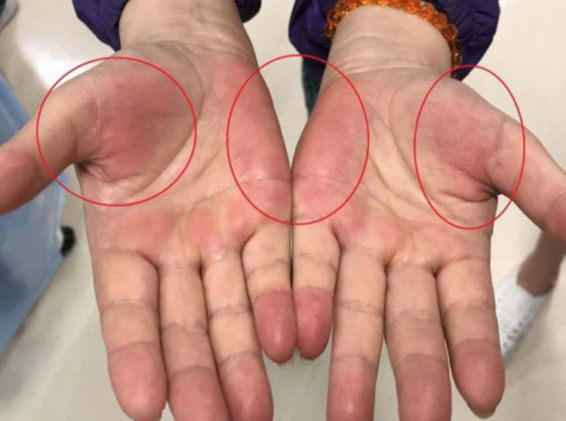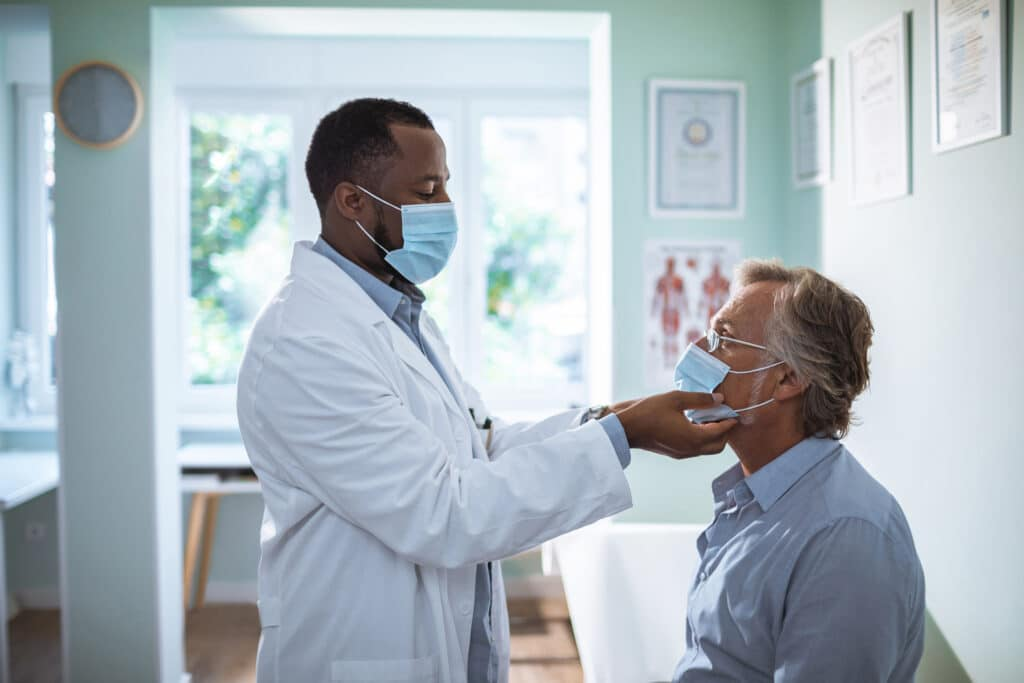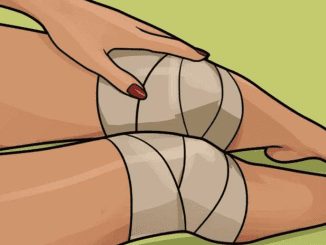Our bodies often give us subtle clues when something isn’t quite right. One such sign could be found right in the palm of your hand. Redness, small spider veins, or red spots resembling tiny moles on your hands, shoulders, or chest might indicate a liver issue. Although these symptoms can sometimes be mistaken for minor skin conditions, they could be warning signs of underlying liver disease. Understanding these signs and knowing when to seek medical attention could make a crucial difference in your health. Here’s what to look out for and why these symptoms appear.

Why the Liver Is Essential to Your Health
The liver is one of the most vital organs in your body, responsible for numerous functions essential to your overall well-being. This organ, located in the upper right quadrant of your abdomen, performs tasks such as detoxifying harmful substances, regulating hormones, producing bile for digestion, and storing vitamins and minerals. Because the liver plays such a central role, any dysfunction can ripple out to affect your entire system.
Liver disease often develops silently, with symptoms only appearing once the condition has progressed. Recognizing early indicators, such as unusual changes on your skin, can be a vital step in catching liver issues before they worsen.
Understanding Spider Veins and Red Spots as Liver Disease Indicators
One of the common early symptoms of liver dysfunction is the appearance of spider veins or red, mole-like spots on the skin. These are often seen on the palms, shoulders, chest, and sometimes even on the face. Here’s why they appear:
1. Reduced Estrogen Processing
A healthy liver helps regulate hormones, including estrogen. When liver function declines, it loses its ability to properly metabolize estrogen. This excess estrogen can cause blood vessels to dilate or even rupture, leading to the appearance of spider veins. These veins resemble tiny, web-like red spots that can be flat or slightly raised on the skin.
2. Fragile Blood Vessels and Capillaries
Liver disease affects the body’s ability to maintain strong blood vessels. The compromised liver function leads to reduced blood vessel integrity, making them more prone to damage. This can result in small bleeds under the skin, which manifest as red or purple spots. These spots are sometimes confused with bruises but tend to appear more frequently and without the usual cause of physical injury.
3. Changes in Blood Flow and Circulation
Liver disease can also disrupt normal blood flow. As the liver struggles to process toxins, inflammation can occur, leading to increased pressure within the veins and capillaries. This pressure can push blood into surrounding tissues, especially on the skin’s surface, causing visible red spots and spider veins.
Other Skin Symptoms Linked to Liver Problems
While spider veins and red spots are common indicators, liver disease can manifest in other ways on the skin. Being aware of these additional symptoms can help you catch potential liver issues sooner:
1. Palmar Erythema (Redness on the Palms)
One of the early signs of liver disease is palmar erythema, which causes redness on the palms. This symptom is related to increased estrogen levels in the bloodstream due to poor liver function. If you notice that your palms have become persistently red, it’s a good idea to check in with a healthcare provider.
2. Jaundice (Yellowing of the Skin and Eyes)
Jaundice is a well-known sign of liver issues, typically appearing in more advanced stages. When the liver can’t process bilirubin (a waste product), it builds up in the blood, causing a yellowing of the skin and eyes. Jaundice is a clear indicator of liver distress and requires immediate medical attention.
3. Itching (Pruritus)
Chronic itching is another symptom that may signal liver disease. This happens because bile salts can accumulate in the skin when the liver is unable to function properly. The itching can be intense and may not be alleviated with regular anti-itch creams or medications.
4. Bruising and Increased Bleeding
As the liver plays a role in clotting and blood health, impaired function can lead to easy bruising and bleeding. If you find that you’re bruising easily or bleeding from small cuts more than usual, this may be due to reduced production of clotting factors—a potential result of liver disease.
Who Is at Risk for Liver Disease?
Liver disease can affect anyone, but certain factors increase the risk. Understanding these can help you take proactive steps in maintaining liver health.

1. Alcohol Consumption
Excessive alcohol intake is one of the leading causes of liver disease. Over time, alcohol damages liver cells, leading to inflammation, scarring, and potentially cirrhosis, which is a serious form of liver disease.
2. Obesity and Poor Diet
Obesity can lead to non-alcoholic fatty liver disease (NAFLD), which occurs when fat builds up in the liver. This condition can progress to more severe forms of liver disease, including liver failure, if not managed properly.
3. Viral Infections
Hepatitis B and C are viral infections that directly affect liver health. Both types of hepatitis can lead to chronic liver disease, and in severe cases, liver cancer.
4. Genetic Factors
Certain genetic conditions, such as hemochromatosis and Wilson’s disease, can impact liver function and lead to liver disease. If there’s a family history of liver problems, you may be at higher risk.
When to See a Doctor About Skin Changes

If you notice any unusual changes in your skin, especially redness, spider veins, or unexplained spots, it’s wise to consult a healthcare professional. These symptoms could be related to various conditions, but it’s essential to rule out liver disease, as early intervention can prevent progression.
During your appointment, your doctor may conduct blood tests to evaluate liver enzymes and other markers of liver health. They may also recommend imaging tests, such as an ultrasound, to get a better view of your liver and determine if there are any signs of damage.
Steps to Support Liver Health and Prevent Disease
Maintaining a healthy liver is essential for overall well-being. Here are a few tips to support liver function and reduce the risk of liver disease:
1. Limit Alcohol Intake
Avoid excessive alcohol consumption to protect liver cells from damage. The liver can process small amounts of alcohol, but chronic overconsumption increases the risk of liver disease.
2. Eat a Balanced Diet
A healthy diet can go a long way in supporting liver health. Focus on nutrient-rich foods, like fruits, vegetables, whole grains, and lean proteins. Limit intake of processed foods, sugars, and unhealthy fats.
3. Stay Active

Regular exercise helps maintain a healthy weight and supports liver function. Aim for at least 150 minutes of moderate-intensity exercise per week, as recommended by health professionals.
4. Get Vaccinated
Hepatitis A and B vaccines can protect against viral infections that may lead to liver disease. If you’re at risk for hepatitis, talk to your doctor about getting vaccinated.
Conclusion: Recognizing Liver Health Warning Signs Early
Your skin can reveal a lot about your health, including potential liver problems. Redness on the palms, spider veins, and other unusual marks may indicate liver issues that require medical attention. By staying vigilant and seeking help when you notice these signs, you can take control of your liver health and prevent further complications. Remember, early intervention is key, and adopting healthy lifestyle habits can go a long way in protecting this essential organ.


